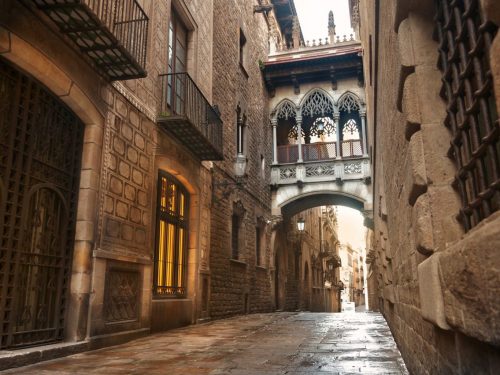
9 Great Things To Do in Barcelona’s El Born District
Nestled between the Gothic Quarter and the beachy vibes of La Barceloneta, the Barcelona neighborhood of El Born is a unique blend of…
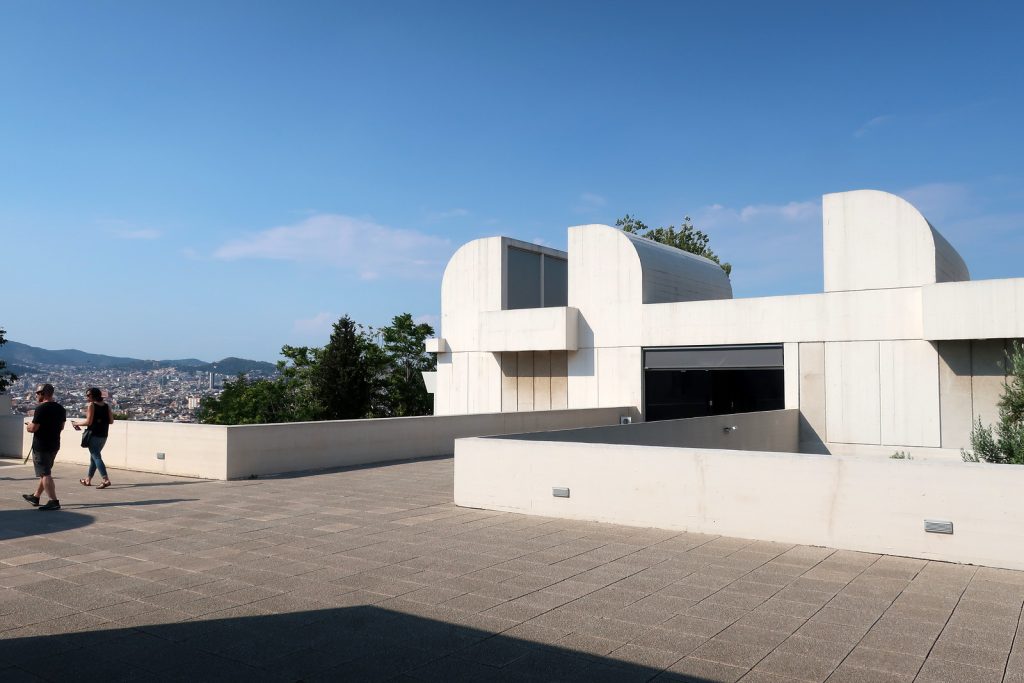
When you visit the Joan Miró Foundation (the Fundació Joan Miró in Catalan) in Montjuïc Park, you feel like the artist himself is taking you on a journey through his life, work, and mind. Not surprising considering that creating the foundation, which officially opened to the public in 1975, was Miró’s idea.
He wanted everyone to be able to contemplate the full breadth of his work in a space where art and nature intertwined. His vision for the museum building — designed by architect and friend Josep Lluís Sert — was that it would form part of the landscape, creating a dialogue between his work and everything that surrounds it.
The Joan Miró Foundation in Barcelona is one of three museums in Catalonia that make up what’s known as the “Miró Triangle.” The other two are the Fundació Mas Miró in Mont-roig del Camp and Fundació Miró Mallorca. His attachment to the landscape of each of these places, especially his parents’ farm in Mont-roig del Camp and Palma in Mallorca, always influenced his work. Miró was a proud Catalan who continued to return to Spain even while he was living in Paris from the 1920s up until the Germans invaded Normandy during World War II.
But it’s in Barcelona’s Montjuïc Park where Miró chose to locate one of the most complete retrospectives of his art. The foundation’s collection contains more than 14,000 works — many donated from the artist’s private collection — including paintings, sculptures, textiles, and drawings. He never limited himself to a single medium, and his style transcends confinement to a single school like surrealism. Admirers of Miró often describe his work as speaking a language all its own.
In this post, I’ll introduce you to the Barcelona-born artist and share tips for visiting the Fundació Joan Miró.
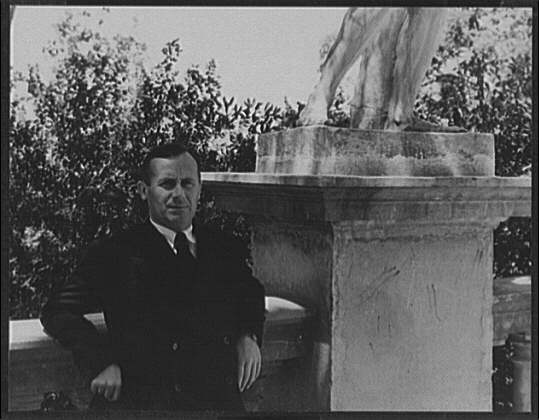
Before we get to the museum, let’s talk about the man himself.
Born in Barcelona on April 20, 1893, Joan Miró was a Catalan artist often classified as a Surrealist despite his resistance to being confined to any one style of art. He might best be described as an avante-garde artist. His work indicates an awareness of artistic trends, but he was always experimenting to develop his own visual language.
Miró’s development as an artist began at age 14, taking art classes at the Escuela Superior de Artes Industriales y Bellas Artes while he was enrolled in business school. When he was 19, he decided to dedicate himself to painting and studied with Francesc Galí at the Escola d’Art from 1912-1915.
It was when he traveled to Paris in 1920 (he would also live in the city for a few years) that he befriended fellow Spanish artist Pablo Picasso and other artists and writers who would come to be associated with surrealism. André Breton, the author of the “First Manifesto of Surrealism” and leader of the movement, even purchased some of Miró’s work, possibly solidifying people’s perception of Miró as a surrealist painter.
What is surrealism? Surrealism is an artistic and intellectual style characterized by creative expression without the intervention of rational thought. It deals with dreams, the imagination, and the subconscious.
Miró was inspired by this approach to making art free from inhibitions, that wasn’t forced.
“Everything comes by itself, like the rhythm of nature. Quite naturally, without forcing it.”
Joan Miró
But Miró grew tired of the constraints of surrealism and sought to create art that would transcend all movements.
When you visit the Joan Miró museum, it’s helpful to understand his deep-rooted love for Catalonia. This lifelong attachment is very present in his art. He would turn parts of the landscape — trees, countryside, architecture — into a visual, symbolic language. For example, his 1921 painting “The Farm” is inspired by the summers he spent on his family’s farm in Mont-roig del Camp, a classic Catalonian landscape.
Fun fact: Ernest Hemingway loved this picture and said “it has in it all that you feel about Spain when you are there and all that you feel when you are away and cannot go there. No one else has been able to paint these two very opposing things.” He won the painting in a game of dice against the writer Evan Shipman, and it’s now on display in the National Gallery of Art in Washington, D.C.
This ability to paint “two very opposing things” in one physical or emotional landscape was Miró’s unique talent. He allowed the objects in his work to speak, turning even the most realistic scenes into poetry. In “The Farm,” Miró invites us to contemplate the footsteps that lead nowhere, the cistern between the two barns that would have been used for collecting rainwater.
The Fundació Joan Miró opened on June 10, 1975, with donations from the artist’s private collection, his wife Pilar Juncosa, and his friend Joan Prats.
Miró wanted to create a reference space for his work in Barcelona, operating not just as a museum but a library and archive for research. Today, the foundation is a space where Miró’s work coexists alongside the most innovative contemporary art.
Miró worked with architect and friend Josep Lluís Sert to design a building inspired by Southern European style. Its white walls contrast with the landscape, there are accessible rooftops to provide visitors with views of Montjuïc and the city of Barcelona, and you’ll find a number of courtyards that act as vantage points for observing the building’s exterior.
Tip: You can download a floorplan of the museum to help you navigate its galleries, courtyards, and rooftops.
The Fundació Joan Miró has 22 galleries divided between two floors. Miró’s collection comprises galleries 1-16, where his works are arranged based on overarching themes. There’s also a wing devoted to the Kazumasa Katsuta collection, which was donated by the Japanese art collector in 2011. The collection includes 32 works by Miró from different periods and reflects the appeal of his work in the East and West.
Tip: The other galleries are used for the Fundació’s rotating exhibitions and as a participatory space for more interactive engagement with the art.
One of the Mediterranean elements Miró and Sert wanted the building to have were courtyards where visitors can step out to see contemporary art mixing with nature. Level One has three main courtyards:
Fun fact: Trees were rich in symbolism for Miró, who saw an olive tree as a sign of longevity, and a carob tree as a sign of fertility.
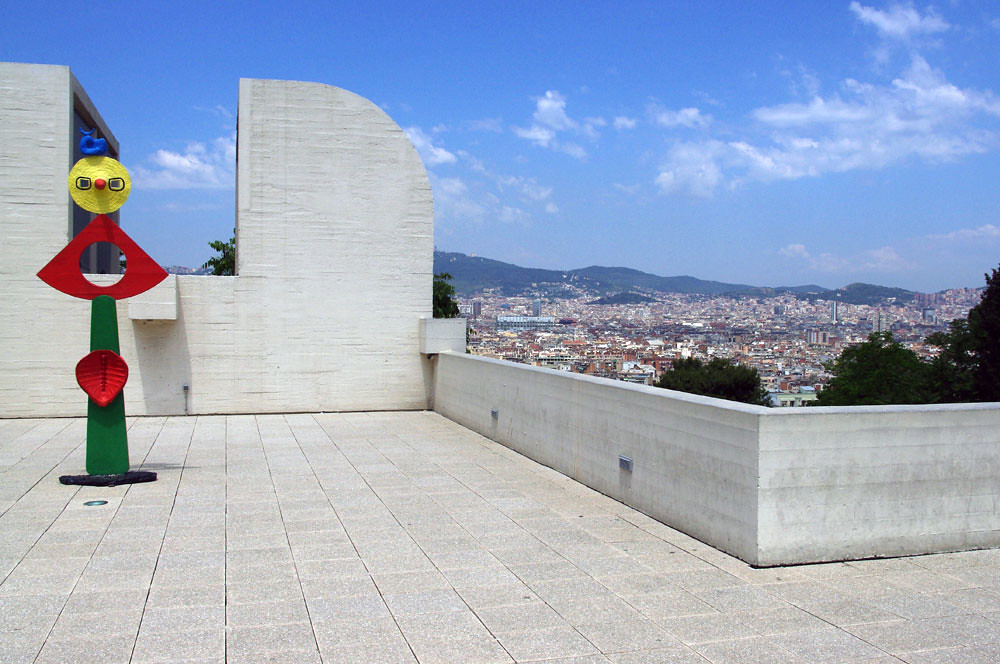
The rooftop terrace functions as an outdoor sculpture garden, as well as a viewpoint for the surrounding city and Montjuïc Park. Be sure to see “La caresse d’un oiseau” (“The caress of a bird”), a sculpture of painted bronze Miró completed in 1967.
The Fundació includes works not just by Miró but also those dedicated to him. Throughout the collection, you’ll find paintings, sculptures, and drawings from artists like Max Ernst, Marcel Duchamp, and Henri Matisse.
Tip: Download the Fundació’s audio guide to learn more about the works you see throughout the museum.
Here are the must-see major works from the collection.
Part of a series known as “the dream paintings,” Miró is playing with free-floating forms against an undefined landscape behind them. You’ll find this painting in Gallery 2 on the first level.
Working from his studio in Mallorca, Miró was able to create a canvas this size. Inspired by a newspaper clipping with a reproduction of a painting by the Buddhist monk Sengai, Miró used those symbols in this work. You’ll find this painting in Gallery 3 on the first level.
“Morning star” is part of Miró’s “Constellations” series, which he created during the outbreak of World War II. This painting was the first time Miró worked while listening to music. You can almost hear it in this piece! You’ll find this painting in gallery 4 on the first level.
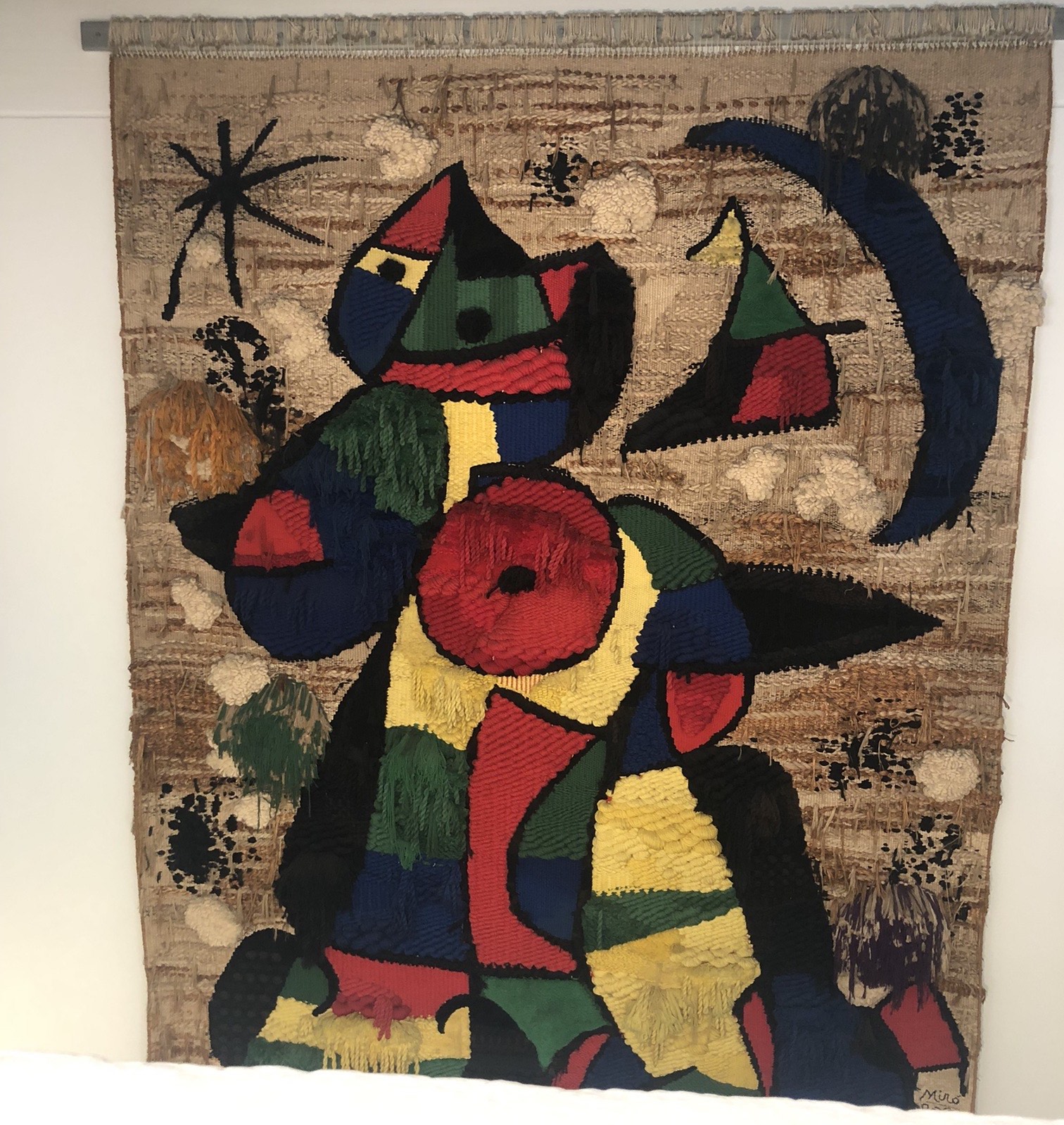
Miró created his first textiles with Josep Royo known as “sobreteixims.” These tapestries were somewhere between textile, painting, and collage.
He designed this massive tapestry (about 24 by 16 feet) specifically for the space. You’ll find this tapestry in Gallery 11 on the first level, but it can also be viewed from a different perspective on the second level.
Miró was 80 years old when he sculpted this monument for the city of Paris. The title of the piece certainly provokes us to think about who the couple might be. You’ll find this sculpture in Gallery 12 on the first level.
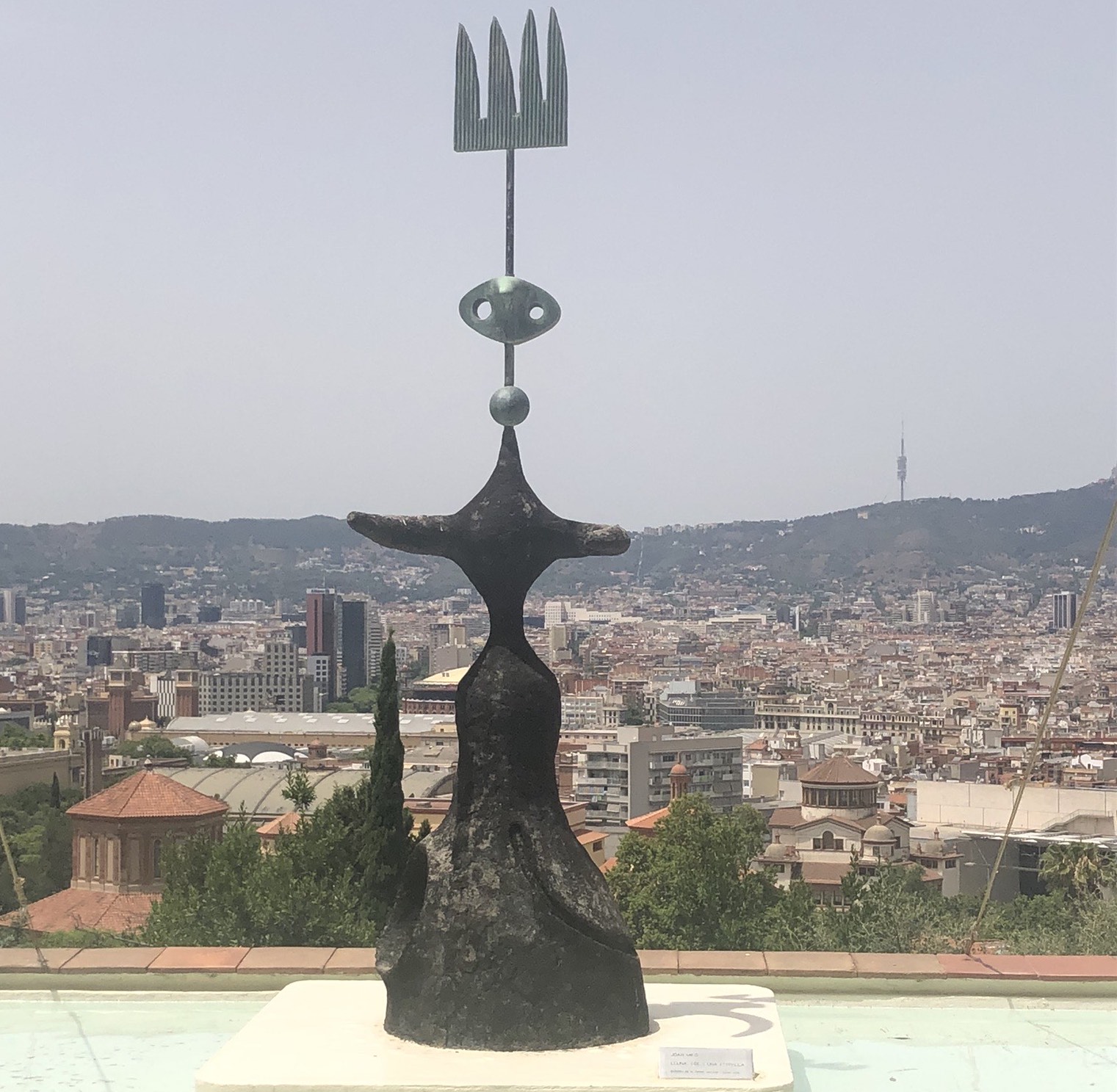
This bronze and painted cement statue is a model of a larger monument that was supposed to be erected in Parc Cervantes to welcome people traveling into Barcelona.
It was never executed, but this sculpture is now a popular spot for pictures when you walk out onto the North Patio on the first level.
American artist Alexander Calder designed this fountain for the Spanish Pavillion for the 1937 Paris Exposition Internationale. This is one of the works dedicated to the museum in Miró’s memory. You’ll find the fountain between galleries 11 and 12 on the first level.
Need a break? The courtyards give you space to relax between galleries, but if you get hungry there’s also a cafe near the Carob Tree Patio.
As you move through the various exhibits, you’ll understand the many different themes that influenced Miró’s art. Landscapes are prominent in his work, but not just Catalonian landscapes.
During his more experimental phase of the 1920s, Miró played with free-floating, atmospheric backgrounds for arranging the individual lines, shapes, and other motifs. In his series “Dutch Interiors,” he manages to create illusionistic dreamscapes inspired by 17th-century Dutch genre paintings. It shows how Miró liked to engage with art history, trends, and traditions, so he could subvert them.
Some of Miró’s works from the 1930s were a response to political turmoil in Europe. He remained in Paris when the Spanish Civil War broke out in 1936 but designed a one-franc stamp, “Aidez l’Espagne” (“Help Spain”), to help raise money for the Republican government and was commissioned to paint a mural for the Spanish Pavillion at the 1937 Paris Exposition Internationale.
When World War II broke out he moved with his wife and daughter to Varengeville-sur-Mer, France before they were forced to flee to Palma in Mallorca in 1942. It’s in Palma where Miró created a series of gouaches known as “Constellations,” which conveyed a feeling of needing to escape.
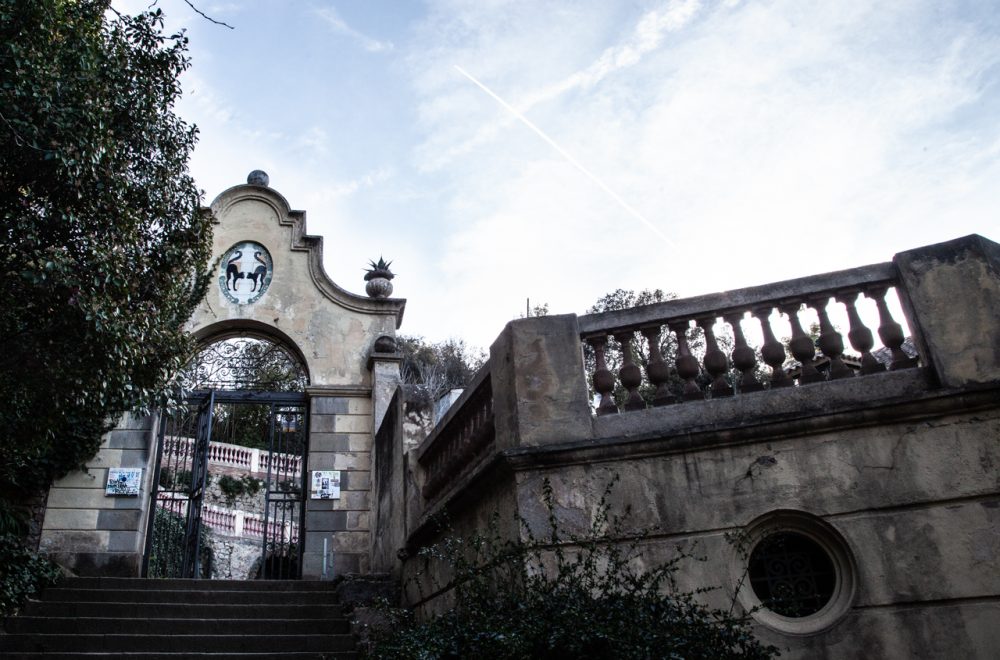
With romantic gardens, panoramic views from hilltops, and a beautiful Magic Fountain that puts on a show, you can plan a whole day in Montjuïc Park. There’s so much to see and do, and our Montjuïc walking tour is a great way to continue exploring the area after spending a morning at the Fundació Joan Miró.
This tour will take you to stops like:
Excited to explore the museum? It’s a great addition to any trip to Barcelona. Here are some practical tips to help you plan for your visit.
The museum is open from 10 a.m. to 8 p.m. every Tuesday through Saturday and from 10 a.m. to 6 p.m. on Sundays.
General admission is €15 when you purchase tickets at the museum and €14 when you purchase them ahead online. For students ages 15-30 and seniors over 65, tickets are available for €7.
The foundation also offers free admission to kids under 15 and people who are currently unemployed.
There’s no parking at the museum, so public transportation is best. The 55 and 150 buses will get you to Montjuïc, and you can also take the Montjuïc Funicular from Metro Paral·lel.
Walking is the best way to explore the park, and there are several paths for getting to the museum on foot.
I recommend downloading the free audio guide or booking a one-hour tour to learn why Miró is one of the most important artists of the 20th century.
While the Fundació in Barcelona lets you contemplate Miró’s work from beginning to end, the Fundació Mas Miró focuses more on his roots and the Fundació Miró Mallorca focuses on his creative process.
Get to know Miró and Barcelona through his art at the Fundació Joan Miró, located where legend says the city of Barcelona began — in Montjuïc! Combine your visit to the museum with our Montjuïc Walking Tour to enhance your experience as a local shows you what makes this hilltop so magical.

Nestled between the Gothic Quarter and the beachy vibes of La Barceloneta, the Barcelona neighborhood of El Born is a unique blend of…
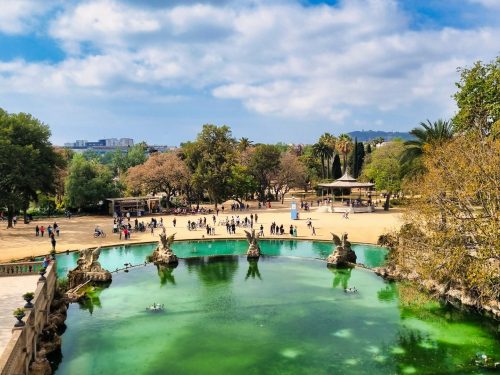
If you happen to be in La Ribera passing a few hours at the Museu Picasso or Museu Moco, you’re no more than…
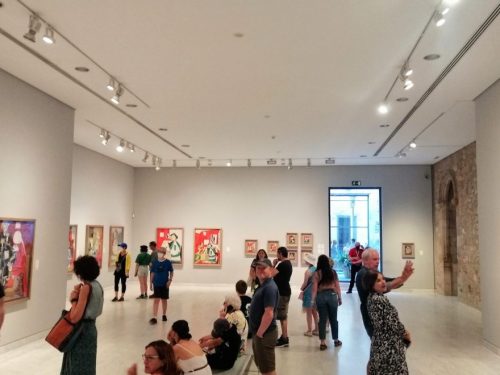
When you think of Pablo Picasso, you might think of 1920s Paris as depicted by Hemingway in “A Moveable Feast” and Woody Allen…